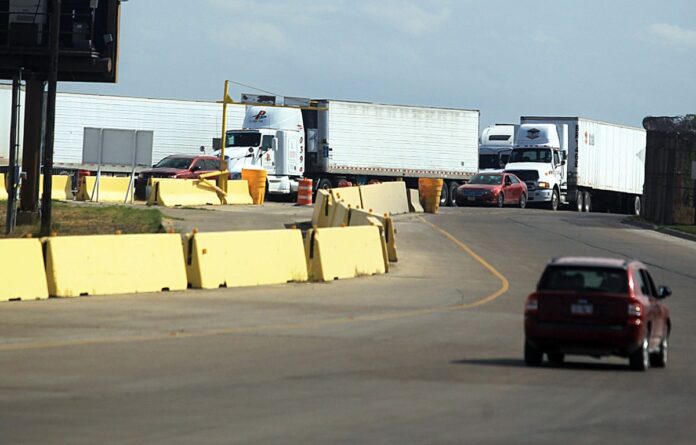Just a week before the announcement, a thread at a statewide hearing in Weslaco was wait times at international ports of entry in Texas.
State representatives on March 20 questioned what has been a common conversation in the trade community over the past year, and an especially local one down the road at the Pharr-Reynosa International Bridge: Why aren’t unified inspections being implemented?
Last week, Homeland Security Secretary Kirstjen Nielsen, alongside Mexican Foreign Minister Luis Videgaray, announced in Mexico City three accords — one of which echoed the demands of the Texas trade community.
Unified cargo processing — a concept that would house customs officials from both the U.S. and Mexico under one roof to conduct cargo inspections simultaneously — would be implemented.
The practice has been implemented at the Nogales port in Arizona, according to Pharr Bridge Director Luis Bazan. It has also been attempted at the Rio Grande City-Camargo International Bridge.
But this announcement will hopefully enhance the busiest cargo ports, such as Pharr, Bazan said.
“To us, this is a winner because our northbound truck traffic is booming and we’re really trying to reduce wait times,” he said.
Others agreed.
“These sorts of initiatives are overdue and have long been needed at our bridge crossings,” said former U.S. Ambassador to Mexico, Tony Garza.
Texas International Produce Association President Dante Galeazzi said these unified inspections increase efficiencies.
“The most efficient way would be for a truck to pull up to one spot and have all parties inspect right there,” Galeazzi said. “That translates into cost savings because drivers are driving less hours because of shorter wait times. They get to their destinations quicker and there’s a decrease in fuel costs.”
There’s also loads of paperwork that could potentially decrease, Galeazzi said.
“When a truck leaves a country and enters another, there’s not uniform paperwork,” he said. “There’s a set of paperwork that has to be reviewed in Mexico, then another set of paperwork that has to be reviewed in the U.S. If there’s one form or one set of forms, that could further increase efficiencies.”
Once the program is implemented, Mexican customs officials will work on the U.S. side of the bridge, Bazan said. But the only trucks eligible for this program will have to be certified under the Customs-Trade Partnership Against Terrorism program.
C-TPAT is a supply chain security program led by Customs and Border Protection. The process for businesses to become certified includes an application, security profile and vetting process. Once accepted, members must be validated within one year of being certified. Every four years, members must be revalidated.
“About 30 to 35 percent of companies crossing our bridge are C-TPAT certified,” Bazan said. “So with unified inspection, we can maximize our capacity and wouldn’t have as many trucks on the bridge because we’d keep them moving a steady pace.”
While the unified inspection announcement was received positively by many in the trade community, questions still remain.
CBP did not provide answers to questions regarding the implementation process, and local officials are not sure how and when it will actually take place.
“Mexico is ready to roll; us at the bridge are ready to provide all the support CBP needs,” Bazan said. “It would be great if we could just have it already and get trucks off the bridge.”




